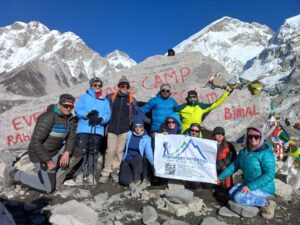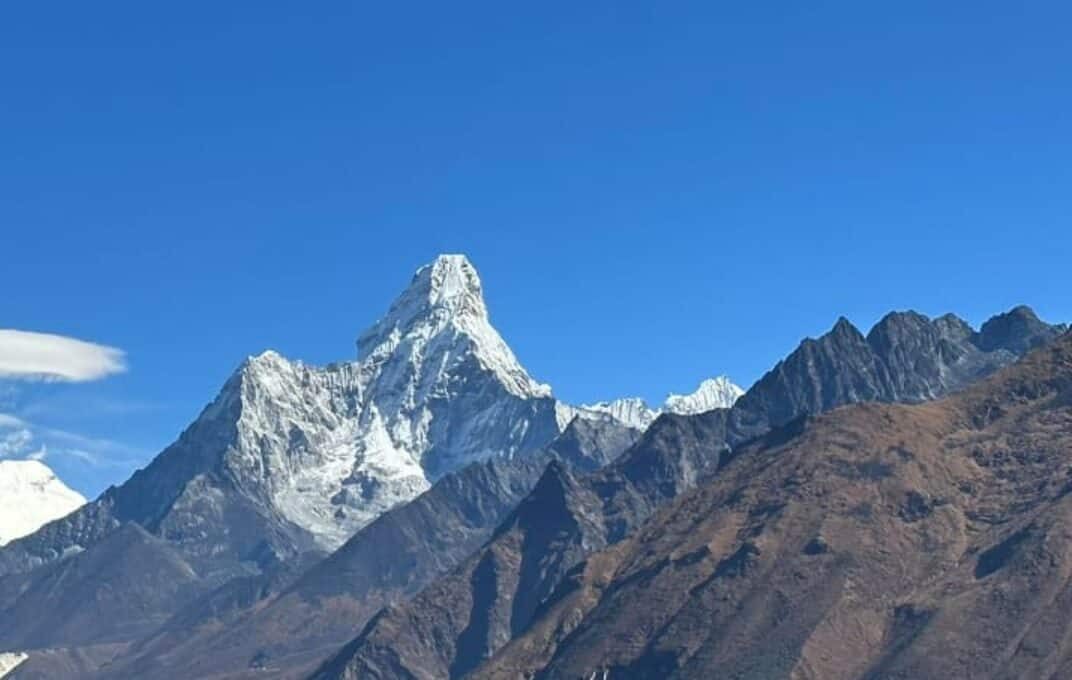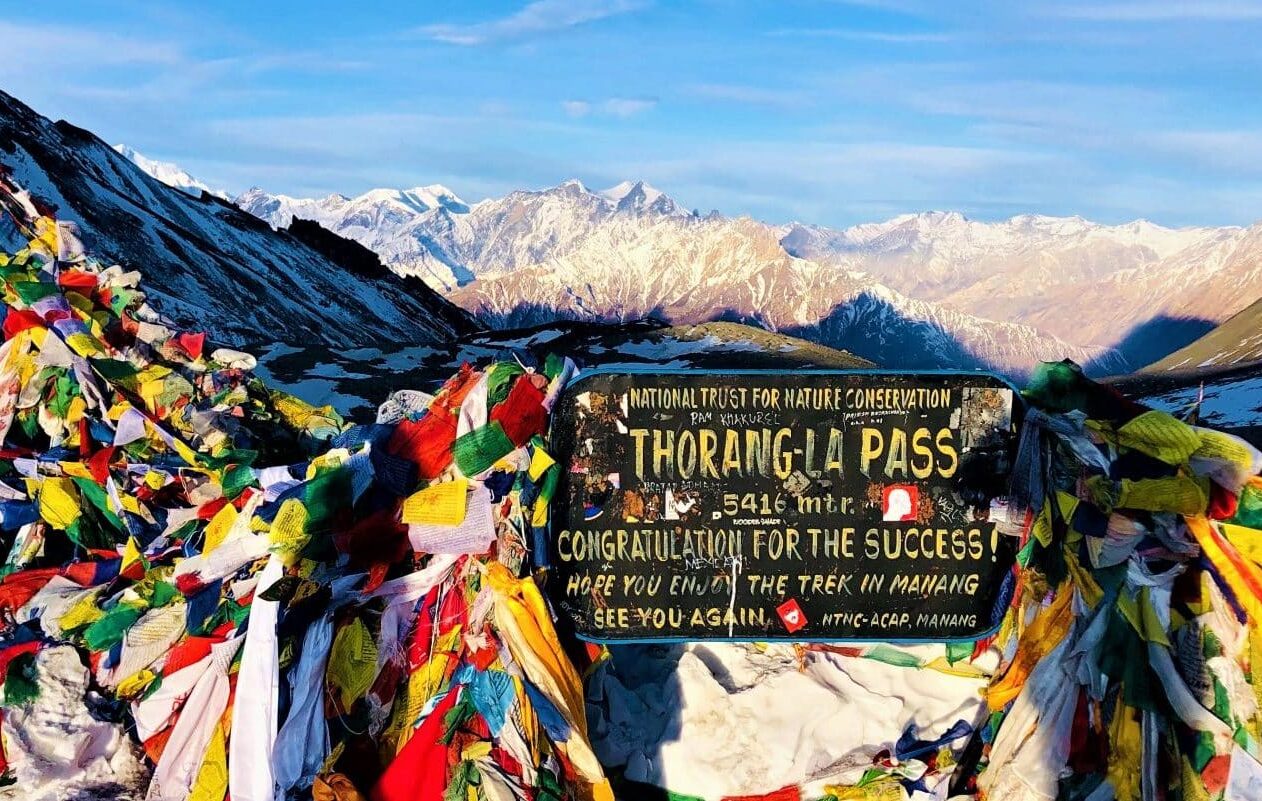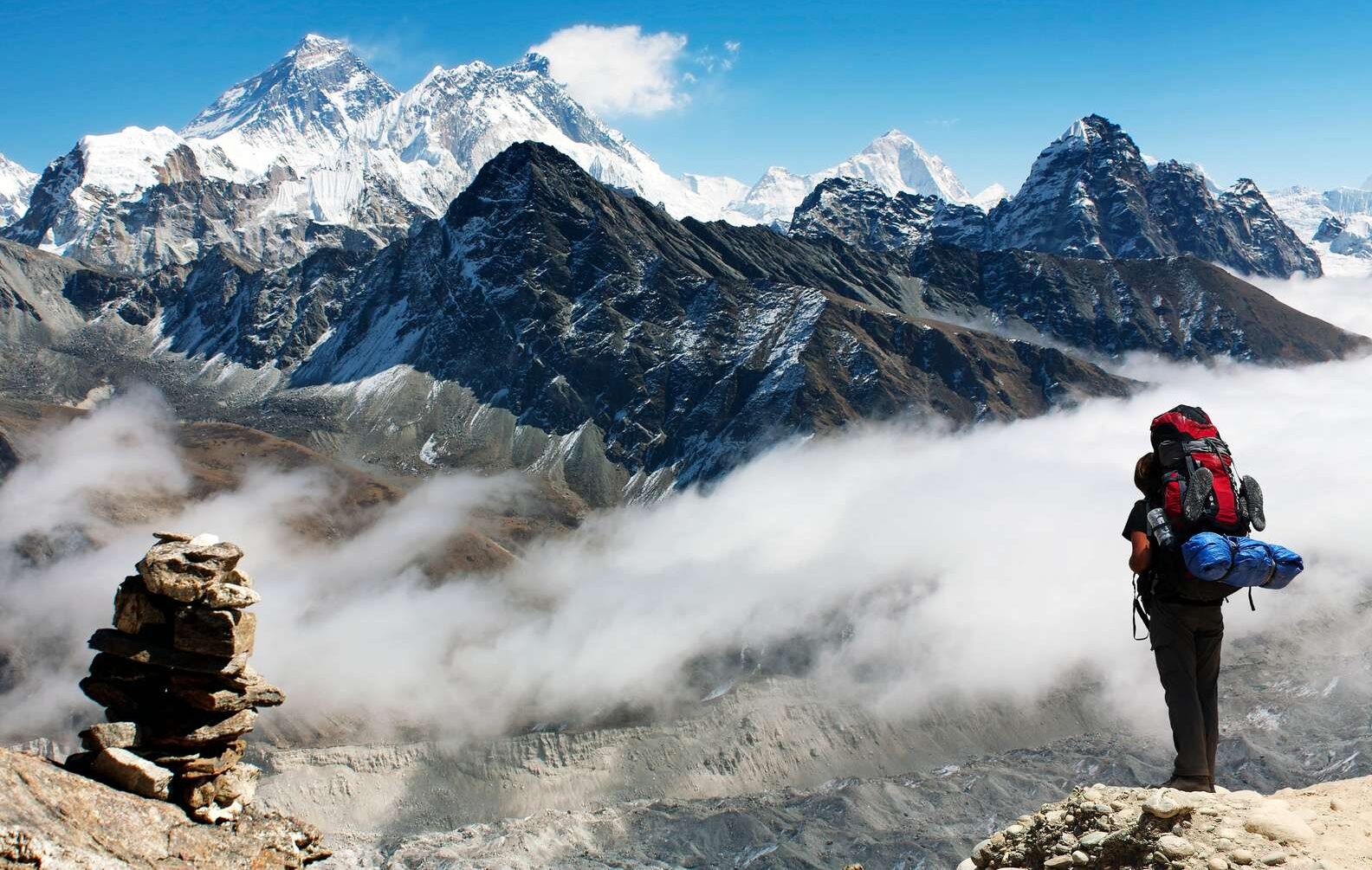
Preparing for the Everest Base Camp (EBC) trek is not merely a recommendation but a necessity due to the extreme conditions and physical demands involved. At an altitude of 5,364 meters (17,598 feet), trekkers face low oxygen levels, harsh weather, and challenging terrain. Without adequate preparation, the risk of altitude sickness, fatigue, and injury increases significantly. Comprehensive preparation ensures that trekkers can handle long hours of hiking, carry necessary gear, and cope with the mental and physical stresses of the journey. The preparation process includes physical conditioning, mental resilience training, and gathering the appropriate equipment, all of which contribute to a safe and enjoyable trekking experience.
The high altitude of Everest Base Camp poses a significant risk of Acute Mountain Sickness (AMS) and other altitude-related illnesses. Symptoms of AMS, such as headaches, nausea, dizziness, and fatigue, can quickly escalate to more severe conditions like High Altitude Pulmonary Edema (HAPE) and High Altitude Cerebral Edema (HACE), which can be life-threatening. Preparing for the trek by acclimatizing gradually and maintaining physical fitness helps the body adjust to the reduced oxygen levels, thereby reducing the risk of these conditions. Proper preparation also involves learning to recognize the early symptoms of altitude sickness and understanding the importance of acclimatization days during the trek.
The physical demands of the EBC trek are another reason why preparation is essential. The trek involves walking for 5-7 hours a day over rough and uneven terrain, often with significant elevation changes. Trekkers need to be in good physical condition to handle these demands without suffering from excessive fatigue or injury. Strength training, cardiovascular exercises, and flexibility conditioning are all crucial components of a comprehensive training regimen. Building muscle strength and endurance helps trekkers carry their gear, navigate steep ascents and descents, and recover quickly from the daily exertion. Cardiovascular fitness improves overall stamina and energy levels, enabling trekkers to maintain a steady pace and enjoy the journey.
Mental preparation is equally important for the EBC trek. The journey to Everest Base Camp is not just a physical challenge but a mental one as well. Long days of walking in potentially harsh weather conditions, the monotony of the trail, and the isolation from modern comforts can all take a toll on a trekker’s mental resilience. Developing mental stamina through mindfulness practices, visualization techniques, and setting realistic expectations helps trekkers stay motivated and focused. A positive mindset and the ability to cope with discomfort and setbacks are essential for a successful trek.
Lastly, preparing for the EBC trek involves gathering the right gear and equipment. The harsh and unpredictable weather conditions in the Himalayas require trekkers to have appropriate clothing and gear to stay warm, dry, and comfortable. Quality trekking boots, moisture-wicking layers, insulating jackets, and waterproof outer layers are all essential. Additionally, equipment such as trekking poles, a reliable backpack, and a well-stocked first aid kit are crucial for safety and convenience. Testing and familiarizing oneself with this gear during training hikes ensures that everything functions properly and provides the necessary support during the trek.
How to Train for Everest Base Camp Trek?
Training for the Everest Base Camp trek is a multi-faceted process that requires dedication, consistency, and a well-rounded approach. The training regimen should focus on building cardiovascular fitness, strength, flexibility, and mental resilience. Each aspect of training plays a crucial role in preparing the body and mind for the challenges of the trek.
Conditioning Hikes
Conditioning hikes are a fundamental part of preparing for the Everest Base Camp trek. These hikes help acclimate your body to the physical demands of trekking and simulate the conditions you will encounter on the trail. Start with shorter hikes on relatively flat terrain and gradually increase the duration, distance, and elevation gain. Aim to incorporate hikes with varied terrain, including steep ascents and descents, rocky paths, and uneven surfaces. Gradually increase the weight of your backpack to simulate carrying your gear during the trek. Begin with a light pack and add weight incrementally, working up to carrying a load similar to what you will have on the actual trek.
Conditioning hikes also serve as an opportunity to test and break in your trekking gear. Wearing your trekking boots and carrying your pack during these hikes helps ensure that everything fits properly and functions as expected. It also allows you to make any necessary adjustments before embarking on the EBC trek. Aim for at least one conditioning hike per week, progressively increasing the difficulty and duration as your fitness improves. By the time you are ready for the trek, you should be comfortable hiking for 6-8 hours with a fully loaded backpack.
Cardiovascular
Cardiovascular fitness is essential for sustaining long periods of walking and climbing at high altitudes. Engaging in regular cardiovascular exercise improves your heart and lung function, increases your stamina, and helps your body utilize oxygen more efficiently. Incorporate activities such as running, cycling, swimming, and rowing into your training regimen. Aim for at least 30-45 minutes of moderate to intense cardio exercise, 4-5 times a week. Interval training, which alternates between high-intensity bursts and low-intensity recovery periods, is particularly effective for building cardiovascular endurance and simulating the varying intensity levels of trekking.
Hill workouts are another valuable component of cardiovascular training. Find a local hill or incline and perform uphill sprints or steady climbs to build leg strength and endurance. If you do not have access to hills, use a treadmill set to an incline or a stair machine. Consistently challenging your cardiovascular system through these workouts prepares your body for the rigors of high-altitude trekking, where every step requires more effort due to the reduced oxygen levels.
Strength Training
Strength training is crucial for building the muscle endurance and stability needed to carry a backpack and navigate uneven terrain. Focus on compound movements that target multiple muscle groups, such as squats, lunges, deadlifts, and step-ups. These exercises build lower body strength, which is essential for climbing steep paths and maintaining balance on rocky terrain. Incorporate upper body exercises, such as push-ups, pull-ups, and rows, to support the weight of your backpack and improve overall muscle balance.
Core strength is also vital for stability and balance during the trek. Include exercises such as planks, Russian twists, and leg raises in your routine to strengthen your core muscles. Aim to perform strength training exercises at least 2-3 times a week, gradually increasing the intensity and resistance as your strength improves. Building muscle endurance through consistent strength training helps prevent fatigue and reduces the risk of injury during the trek.
Flexibility Conditioning
Flexibility conditioning reduces the risk of injury and aids in recovery by improving your range of motion and muscle elasticity. Regular stretching and yoga are effective ways to enhance flexibility. Focus on stretches for the hamstrings, quadriceps, calves, hips, and lower back, as these muscle groups are heavily used during trekking. Incorporate dynamic stretches before workouts to warm up your muscles and static stretches after workouts to cool down and improve flexibility.
Yoga is particularly beneficial for both flexibility and mental conditioning. Yoga poses help stretch and strengthen muscles, improve balance and coordination, and promote relaxation. Incorporate yoga sessions 2-3 times a week to enhance flexibility and support your overall training regimen. Practicing yoga also helps develop mindfulness and mental focus, which are crucial for maintaining a positive mindset during the trek.
Mental Conditioning
Mental resilience is as important as physical fitness for the Everest Base Camp trek. The journey involves long days of walking in potentially harsh weather conditions, isolation from modern comforts, and the mental challenge of maintaining motivation and focus. Developing mental stamina through mindfulness practices, meditation, and visualization techniques helps build resilience and mental fortitude.
Mindfulness practices, such as meditation and deep breathing exercises, help manage stress and anxiety, improve concentration, and promote a sense of calm. Visualization techniques involve mentally rehearsing the trek, imagining yourself successfully navigating challenging sections of the trail, and reaching the base camp. These practices help build confidence and prepare your mind for the physical and mental challenges of the trek.
Setting realistic expectations and developing a positive mindset are also crucial for mental conditioning. Acknowledge that the trek will be physically demanding and mentally challenging, but focus on the rewards of the journey, such as the stunning landscapes, the sense of accomplishment, and the unique cultural experiences. Maintaining a positive attitude and staying motivated through the tough sections of the trek are key factors in a successful and enjoyable journey to Everest Base Camp.
The Weekly Training Plan for Everest Base Camp Preparation
A well-structured weekly training plan ensures a balanced approach to building cardiovascular fitness, strength, flexibility, and mental resilience. Here’s a weekly training plan to prepare for the Everest Base Camp trek:
Monday
- Cardio: Start the week with a 30-45 minute session of moderate to intense cardiovascular exercise. Running, cycling, or swimming are excellent options to get your heart rate up and improve stamina.
- Strength Training: Focus on lower body exercises such as squats, lunges, and step-ups to build leg strength and endurance. Aim for 3 sets of 10-15 repetitions for each exercise.
- Flexibility: Finish with 15 minutes of stretching or yoga to enhance flexibility and aid muscle recovery. Focus on stretches for the legs, hips, and lower back.
Tuesday
- Cardio: Engage in interval training to boost cardiovascular fitness and simulate the varying intensity levels of trekking. Start with a 5-minute warm-up, followed by 1-minute sprints and 2-minute walk/jog intervals for 20 minutes, and finish with a 5-minute cool-down.
- Strength Training: Concentrate on upper body exercises such as push-ups, pull-ups, and rows. Perform 3 sets of 10-15 repetitions for each exercise to build upper body strength and stability.
- Flexibility: Spend 15 minutes on stretching or yoga to improve flexibility and prevent injuries. Focus on stretches for the shoulders, chest, and upper back.
Wednesday
- Conditioning Hike: Take a 2-3 hour hike on varied terrain with a light pack. Gradually increase the distance and elevation gain to simulate trekking conditions. This hike helps build endurance and acclimatizes your body to carrying a backpack.
- Flexibility: Follow the hike with 15 minutes of stretching or yoga to enhance flexibility and aid muscle recovery. Focus on stretches for the legs, hips, and lower back.
Thursday
- Cardio: Perform a 30-45 minute session of moderate to intense cardiovascular exercise. Running, cycling, or rowing are excellent options to improve cardiovascular endurance.
- Strength Training: Focus on core exercises such as planks, Russian twists, and leg raises to build core strength and stability. Aim for 3 sets of 10-15 repetitions for each exercise.
- Flexibility: Finish with 15 minutes of stretching or yoga to enhance flexibility and aid muscle recovery. Focus on stretches for the core, lower back, and hips.
Friday
- Rest Day: Allow your body to recover with a rest day. Engage in light activities such as walking, gentle yoga, or stretching to promote active recovery and prevent stiffness.
Saturday
- Conditioning Hike: Take a longer conditioning hike of 4-6 hours on varied terrain with a moderate pack. This hike should simulate the duration and intensity of a typical trekking day. Gradually increase the distance and elevation gain to build endurance and acclimatize your body to carrying a loaded backpack.
- Flexibility: Follow the hike with 15 minutes of stretching or yoga to enhance flexibility and aid muscle recovery. Focus on stretches for the legs, hips, and lower back.
Sunday
- Strength Training: Perform a full-body workout combining lower and upper body exercises. Include squats, lunges, step-ups, push-ups, pull-ups, and rows to build overall muscle strength and endurance. Aim for 3 sets of 10-15 repetitions for each exercise.
- Flexibility: Spend 15 minutes on stretching or yoga to improve flexibility and prevent injuries. Focus on stretches for the entire body, including the legs, hips, shoulders, and back.
- Mental Conditioning: Dedicate 10-15 minutes to mindfulness or meditation practices to develop mental resilience and focus. Visualization techniques can also be helpful in preparing for the trek.
Tips for Everest Base Camp Preparation
Embarking on the Everest Base Camp trek is a remarkable adventure that requires careful preparation. Here are some essential tips to help you get ready:
Start Early
Begin your training at least 3-6 months before the trek. Starting early allows for a gradual improvement in fitness and ensures you have enough time to build endurance and strength without rushing. This slow and steady approach helps prevent injuries and prepares your body for the demands of the trek.
Gradual Progression
It’s crucial to increase the intensity and duration of your workouts gradually. A sudden increase in training intensity can lead to overtraining and injuries. By progressively challenging your body, you allow it to adapt and strengthen over time, making you more resilient to the physical demands of the trek.
Simulate Trekking Conditions
Training with a backpack is vital to get used to carrying weight and walking on uneven terrain. This practice helps your body adjust to the physical demands of the trek and prevents discomfort during the actual journey. Incorporate hikes with similar conditions to what you’ll face on the trail to better prepare yourself.
Stay Hydrated
Proper hydration is crucial during both training and the trek itself. Drinking plenty of water throughout the day and during workouts helps maintain optimal performance and prevents dehydration. Remember, staying hydrated is key to keeping your body functioning well, especially at high altitudes.
Altitude Training
If possible, spend time at higher elevations before your trek to acclimate your body to the reduced oxygen levels. Hiking or training in mountainous areas can help prepare you for the high altitudes of the EBC trek. This preparation can make a significant difference in how well you handle altitude changes during the trek.
Nutrition
Maintaining a balanced diet is essential to support your training and recovery. Consuming a mix of carbohydrates, proteins, and healthy fats fuels your workouts and promotes muscle repair and growth. Proper nutrition ensures your body has the energy and nutrients it needs to perform at its best.
Rest and Recovery
Allowing your body to rest and recover is just as important as the training itself. Include rest days and active recovery sessions in your training plan to prevent overtraining and injuries. Resting ensures your muscles have time to repair and rebuild, making you stronger and more prepared for the trek.
Gear Testing
Using your trekking gear during training hikes is crucial to ensure comfort and functionality. Breaking in your boots, adjusting your backpack, and testing your clothing and equipment will help you avoid any issues during the trek. This preparation can make a significant difference in your overall trekking experience.
Consult a Doctor
Lastly, get a medical check-up to ensure you are fit for high-altitude trekking. Discuss any health concerns or pre-existing conditions with your doctor and seek advice on altitude sickness prevention and medication. Having medical clearance and guidance ensures you embark on your trek safely and confidently.
By following these tips, you’ll be well-prepared for the physical and mental challenges of the Everest Base Camp trek. Proper preparation not only enhances your chances of success but also makes the journey more enjoyable and rewarding.
Packing List for Everest Base Camp Preparation
Preparing the right gear is crucial for ensuring a successful and comfortable trek to Everest Base Camp. Below is a comprehensive packing list to help you prepare thoroughly:
Clothing: Firstly, base layers such as moisture-wicking thermal tops and bottoms are essential for regulating body temperature and managing sweat. Mid layers, including fleece jackets and pants, provide insulation and can be layered for added warmth. Outer layers, such as waterproof and windproof jackets and pants, protect against rain, wind, and snow. Additionally, an insulating layer like a down or synthetic jacket offers extra warmth during cold nights and high-altitude sections. Comfortable, durable, and quick-drying trekking pants are ideal for variable terrain, while long-sleeved and short-sleeved moisture-wicking trekking shirts keep you dry and comfortable. Quick-drying and moisture-wicking underwear prevents chafing.
Headwear: For sun protection during the day, a wide-brimmed sun hat is essential, while a warm beanie comes in handy for colder weather at higher altitudes. A buff or scarf serves dual purposes, providing warmth and protection against dust and wind.
Handwear: Lightweight liner gloves are perfect for mild conditions, and warm, waterproof insulated gloves are essential for cold weather and higher altitudes.
Footwear: Sturdy, waterproof trekking boots provide support on rough terrain, while moisture-wicking and warm trekking socks keep feet dry and comfortable. Lightweight camp shoes are ideal for relaxing in the evenings after a day of trekking.
Accessories: UV protection sunglasses shield your eyes from the intense mountain sun, and a reliable headlamp with extra batteries ensures you’re prepared for early mornings and nighttime use. Adjustable trekking poles provide stability and reduce leg strain, while gaiters protect against mud, snow, and debris on the trail.
Backpack: A daypack with a capacity of 20-30 liters is perfect for carrying daily essentials such as water, snacks, camera, and extra layers. A durable duffle bag is essential for porters to carry your main gear, complete with a waterproof cover to protect against rain.
Medicine: Altitude sickness medication, such as Diamox, as prescribed by your doctor, is crucial. Pain relief medications like ibuprofen or paracetamol are handy for headaches and muscle pain. A comprehensive first aid kit should include band-aids, antiseptic wipes, blister treatment, and any personal medications you require.
Toiletries: Essential toiletries include toilet paper for trail use where facilities are limited, wet wipes for personal hygiene without access to showers, and hand sanitizer to keep hands clean and reduce illness risk. Travel-sized toothbrush and toothpaste are convenient, along with high SPF sunscreen to protect from UV rays at high altitudes and SPF lip balm to prevent chapped lips.
Documents: Ensure your passport is valid with necessary visas, and carry trekking permits such as the TIMS card and Sagarmatha National Park permit. Travel insurance covering high-altitude trekking and emergency evacuation is essential, as well as cash for trail expenses where ATMs are unavailable.
Miscellaneous: For hydration, reusable water bottles or a hydration bladder are essential, along with water purification tablets or a filter for safe drinking water. Energy-boosting snacks like energy bars, nuts, and dried fruits are perfect for quick boosts on the trail. Don’t forget your camera to capture stunning landscapes and memories, and a notebook and pen to journal your adventure and note important details.
Frequent FAQs of Everest Base Camp Preparation
Can a beginner trek to Everest Base Camp?
Yes, a beginner can trek to Everest Base Camp with proper preparation and training.
While the Everest Base Camp trek presents challenges, it remains accessible even to those new to trekking, as it does not require technical climbing skills. However, beginners must dedicate time to building their fitness levels, acclimatizing to high altitudes, and becoming familiar with the trek’s demands.
Joining our guided trek can provide additional support and ensure that all logistical aspects are handled, allowing beginners to focus on the physical and mental challenges of the journey.
How long does it take for Everest Base Camp Preparation?
Preparation time varies depending on an individual’s fitness level, but generally, 3-6 months of dedicated training is recommended. This period allows for gradual improvement in cardiovascular endurance, strength, and hiking experience. Starting early provides enough time to build up to longer and more strenuous hikes, acclimate to carrying a loaded backpack, and ensure that all gear is tested and comfortable. Consistent training over this period helps prevent injuries and ensures that trekkers are well-prepared for the demands of the EBC trek.
How fit do you need to be to walk Everest Base Camp?
To trek to Everest Base Camp, you need to have a good level of cardiovascular fitness, muscle strength, and endurance. You should be able to walk for 5-7 hours a day with a backpack, handle steep ascents and descents, and cope with the effects of high altitude. Regular cardio workouts, such as running, cycling, or swimming, help build the necessary stamina. Strength training for the legs, core, and upper body supports carrying a backpack and navigating uneven terrain. Flexibility conditioning through stretching or yoga helps prevent injuries and aids in recovery. Overall, a balanced and consistent training regimen is essential for preparing your body for the trek.
Do you need help to do Everest Base Camp?
While it is possible to trek to Everest Base Camp independently, many opt for the assistance of guides and porters. Guides provide valuable local knowledge, manage logistics, and ensure safety, especially at high altitudes. They can also help with acclimatization and navigating the trail. Porters assist by carrying heavy loads, allowing trekkers to conserve energy and focus on the trek itself. Organized tours offer a structured itinerary, support services, and the camaraderie of a group, which can be beneficial for first-time trekkers and those seeking a more comfortable and secure trekking experience.
How do I prevent altitude sickness during EBC Trek?
Preventing altitude sickness involves gradual acclimatization, staying hydrated, and listening to your body. Ascend slowly and take acclimatization days to allow your body to adjust to the reduced oxygen levels. Drink plenty of water to stay hydrated and avoid alcohol and caffeine, which can contribute to dehydration. If symptoms of altitude sickness appear (headache, nausea, dizziness), descend to a lower altitude and rest. Medication like Diamox can help prevent altitude sickness but should be taken under medical advice. Proper preparation, pacing, and being aware of your body’s response to altitude are key to preventing altitude sickness.
Final Remarks on Everest Base Camp Preparation
Everest Base Camp Preparation is a comprehensive process that requires dedication, planning, and physical and mental resilience. By following a structured training plan, packing the right gear, and taking necessary precautions against altitude sickness, you can enhance your chances of a successful and enjoyable trek. Remember, the journey to Everest Base Camp is as much about the preparation and experience as it is about reaching the destination. Embrace the challenge, enjoy the stunning Himalayan landscapes, and make lasting memories along the way.
Furthermore, the trek to Everest Base Camp is a journey of a lifetime, offering breathtaking views, a deep connection with nature, and a profound sense of accomplishment. Proper preparation is the key to making this experience safe, enjoyable, and memorable. Take the time to train your body and mind, gather the right gear, and approach the trek with a positive and determined mindset. With the right preparation, you can embark on this adventure with confidence, knowing that you are ready to face the challenges and reap the rewards of trekking to the base of the world’s highest mountain.



